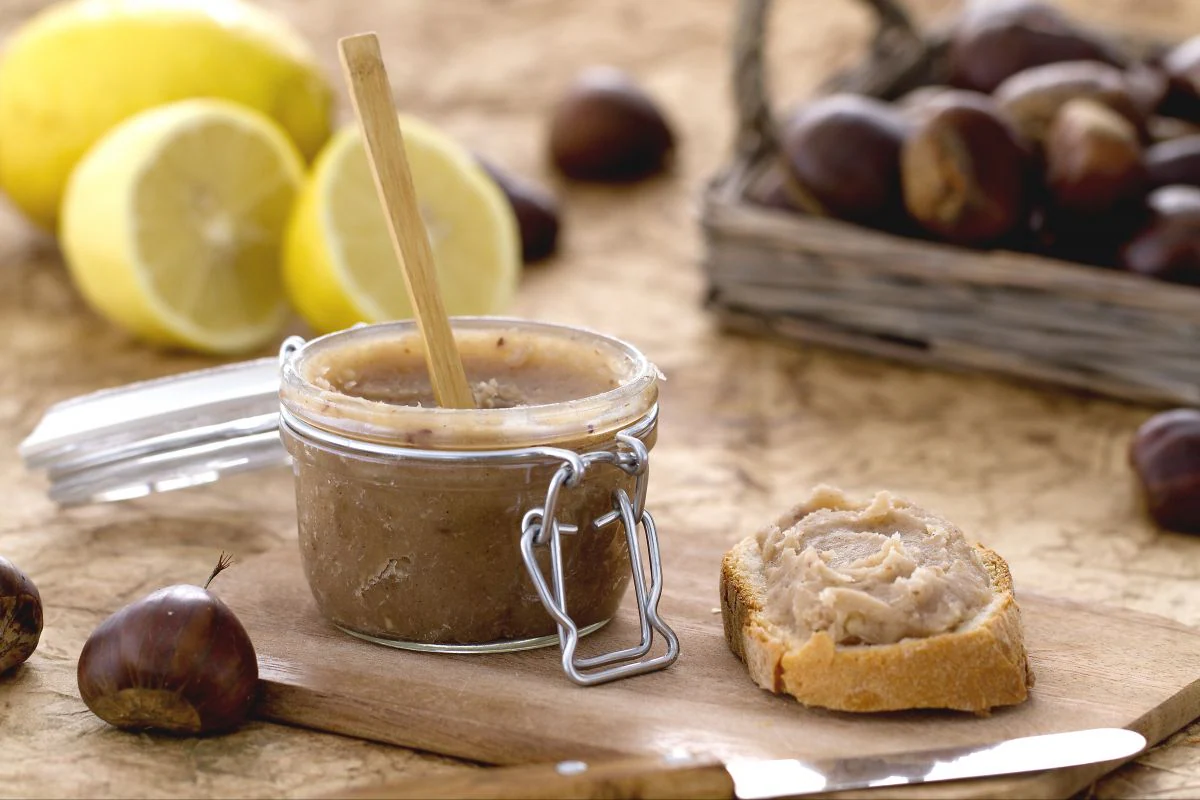Tart with Chestnut Cream
- Easy
- 2 h 15 min
- Kcal 556

Soft, spreadable chestnut cream brings a touch of simple luxury into winter kitchens everywhere. Family tables always look a little happier with this rich, golden cream on hand...the gentle sweetness and smooth, soft consistency of homemade chestnut cream sets it apart from other dessert toppings, making every slice of cake or piece of bread a little more special. It's not just a chestnut spread you slather on morning toast (though that's a DELICIOUS use)—families find it works just as well as a comforting treat tucked into pastries, swirled onto yogurt for those busy weekday breakfasts, or showcased during weekend brunches. The unique flavor of sweet chestnut cream comes through in every bite, adding a naturally subtle sweetness that stays true to the roasted chestnuts without being TOO sweet. Holiday tables get a boost from its beautiful, creamy color and lovely aroma, especially when used to finish off tarts or layered desserts. For big baking days or quiet evenings, adds a nice familiar comfort to any favorite sweet...kids love a little dab on pancakes, and adults usually sneak a spoonful right from the jar (I definitely do).
Although crème de marrons has deep roots in French kitchens, homemade chestnut cream is right at home in American family meals these days. The versatility is part of what makes it so loved by home cooks—spread it in a creamy layer between Swiss rolls, fill cupcakes, or spoon over vanilla ice cream...always brings just the right amount of warmth and nice sweetness. Busy families often keep extra creamy chestnut puree on the shelf since it holds up well and can be served with both sweet and savory recipes (great on waffles or cheese boards, too). Mark special occasions with this great-tasting favorite—family gatherings, holidays, or cozy weekend mornings. Kids tend to ask for more every time they taste this smooth, DELICIOUS classic, while home cooks appreciate the easy success and good flavor results. Serving suggestions are endless, and the friendly appeal makes it one of those extras that shows up again and again at the heart of family food traditions.
You might also like:

To prepare the chestnut cream, start by washing the chestnuts under running water 1, then place them whole in a pot full of water and boil for at least 15 minutes 2 then drain and let them cool slightly. At this point, peel the chestnuts with a sharp knife 3.

Transfer the chestnuts into a food mill 4 to obtain a sandy mixture 5 or alternatively, you can use a potato masher. This will yield about 3.5 lbs of pulp. Now take the vanilla pod and cut it lengthwise 6

and extract the seeds inside 7. Place a high-sided pan on the heat, add the vanilla pod with its seeds, the sugar 8, and the water 9.

Melt the sugar over medium heat, stirring with a whisk for about 10 minutes 10. Once the sugar is completely melted, remove the vanilla pod with kitchen tongs 11 and incorporate the chestnuts 12 and mix the mixture.

Grate the zest of an untreated lemon 13 and add it to the cream 14. Cook over low heat for about 1 hour, stirring occasionally with a wooden spoon. The chestnut cream will be ready when it becomes a creamy puree 15.

At this point, transfer the chestnut cream into jars using a spoon (16-17), your chestnut cream is ready 18.